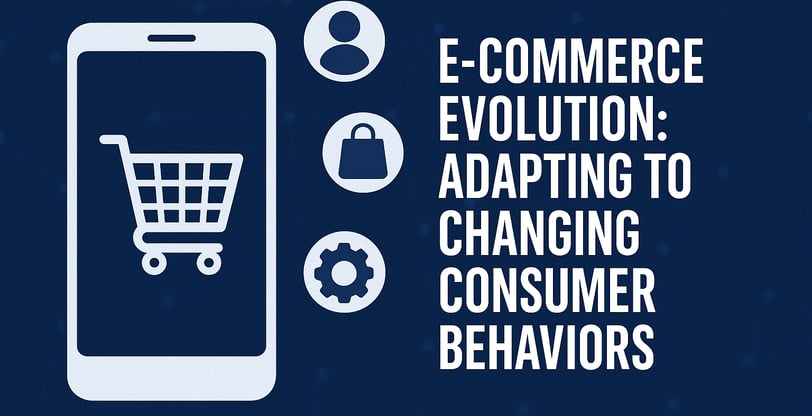E-Commerce Evolution: Adapting to Changing Consumer Behaviors
Faisal S
5/5/20252 min read


E-commerce is no longer the future, it’s the now. The way consumers shop online is changing faster than ever. If you’re a small business owner, adapting to these trends isn’t optional, it’s essential for survival and growth.
1. Mobile Shopping is Dominating the Scene
Over 70% of online retail traffic now comes from mobile devices. That means if your website isn’t optimized for mobile, you’re not just leaving money on the table, you’re practically locking the front door to your store.
What you should do:
Ensure your website is fully responsive (works on all screen sizes).
Simplify navigation and checkout, aim for a “thumb-friendly” design.
Use large buttons, autofill forms, and reduce load times.
Use Google’s Mobile-Friendly Test tool to check website’s performance on smartphones.
2. Personalization is the New Standard
Consumers today expect more than just a product, they want an experience tailored to them. Personalized product suggestions, targeted offers, and relevant emails significantly increase conversion rates.
What you should do:
Use customer purchase history to offer recommendations. Tools like Limespot and Rebuy enable content personalization and integration with Shopify, BigCommerce, etc.
Set up automated email flows based on user behavior (e.g., abandoned cart, birthdays). Tools like Omnisend and Klavio create behaviour based email flows.
Add simple quizzes or filters on your site to guide product choices. Utilize tools like Octane AI and Zapier.
3. Social Media is the New Shopping Mall
Instagram, TikTok, Facebook, these aren’t just marketing tools anymore. They’re fully-fledged storefronts. Consumers are discovering products and making purchases directly from their social feeds.
What you should do:
Set up Instagram and Facebook Shops with clickable product tags.
Work with micro-influencers in your niche for authentic exposure.
Post behind-the-scenes content and real customer stories.
4. Faster, Simpler, Smarter Checkout
Modern consumers want checkout to be as quick and painless as possible. Long forms or unexpected shipping fees can cause them to abandon carts instantly.
What you should do:
Offer guest checkout.
Integrate digital wallets (Apple Pay, Google Pay, PayPal).
Be transparent about shipping and returns.
5. Local Advantage Still Wins
Amidst global competition, small businesses can thrive by focusing on local strength. Fast shipping, local pickup, community support, and authenticity are all factors that big players can’t replicate easily.
What you should do:
Highlight local roots in your branding and messaging.
Partner with local creators and community events.
Offer local delivery or curbside pickup if feasible.
Final Thoughts
E-commerce is all about meeting consumers where they are, on their phones, in their feeds, and with solutions that feel uniquely theirs. For small businesses, the good news is you don’t need massive budgets to adapt. You just need agility, a strong customer connection, and a willingness to evolve.
If you’re looking to modernize your e-commerce strategy or need help streamlining your operations, FinAce Global offers fractional CFO services tailored for small businesses.
Need help? just ask.
subscribe for more
+1 202 644 1306
© 2025. All rights reserved.
